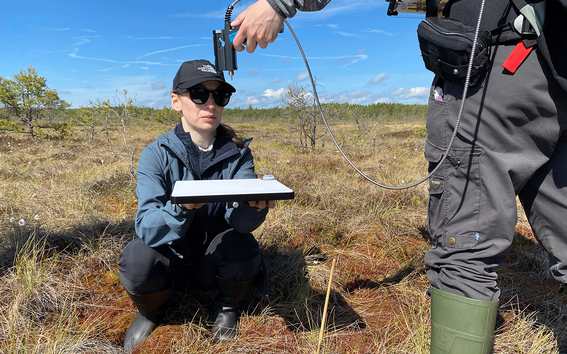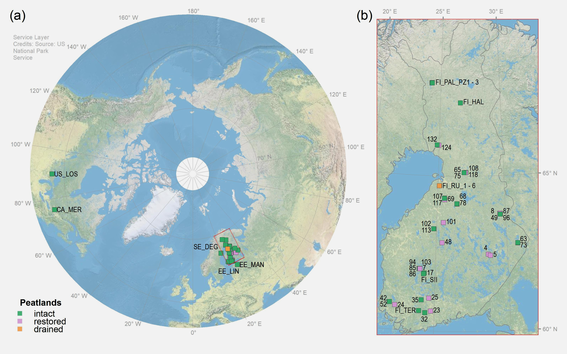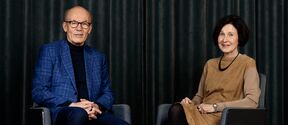New remote sensing method helps monitor the results of peatlands rehabilitation

Earth's peatlands store nearly one-third of all carbon sequestered into soil. When peatlands are drained – or dried – the carbon stored within is released into the atmosphere. A total of 50 million hectares of peatlands have been drained around the world. Nearly half of Europe's peatlands have been drained for use in forestry, agriculture and peat extraction.
According to a proposed regulation given by the European Commission in 2022, at least 20 percent of land and sea areas in the EU are to be restored by the year 2030. Meanwhile, the Intergovernmental Panel on Climate Change (IPCC) stated in its report in March 2023 that the restoration of the planet's peatlands plays a significant role in preventing the warming of the climate.
Peatlands are rehabilitated by blocking the ditches used to drain them in order to begin restoring the water table within the peat layer and returning the peatland to a natural state. After rehabilitation, the water table of peatlands must be monitored to ensure the success of rehabilitation efforts.
Peatlands are difficult to traverse and thus laborious and slow to study on location. Data must also be gathered from large areas over many years, as peatlands change slowly following rehabilitation.
'Satellites used for remote sensing can be used to monitor vast peatlands around the world. Usually, satellites orbit the Earth for years and they may map the same area every week, which makes it possible to monitor changes in peatlands in great detail and large time series,' says Aalto University Professor Miina Rautiainen, the leader of the international remote sensing project.
The study uses open satellite data gathered by the European Space Agency's (ESA) Sentinel-2 satellite. The data covers 53 peatlands located in Finland, Sweden, Estonia, the United States and Canada.
The study was also a pilot for applying the remote sensing method OPTRAM (Optical TRApezoid Model) to peatland environments. The peat in peatlands binds water in a completely different way than agricultural mineral land, which OPTRAM is usually used for.

Satellite data compared with measurements taken on location
The satellite images were sequenced into multi-year time series that were analysed with the help of cloud computing.
'The water table of peatlands was determined from the images by observing the moisture content of vegetation. The calculated water levels were then compared with in situ measurements, which were conducted at all 53 peatlands between 2018-2021. These locations included natural, drained and rehabilitated peatlands,' says researcher Iuliia Burdun of Aalto University.
The data used for the study is exceptionally large in geographical terms. The vegetation, draining and even rehabilitation efforts of peatlands vary by country. A satellite monitoring study of peatlands' water tables has never been done at this scale. Finnish state-owned enterprise Metsähallitus, which has already rehabilitated 40 000 hectares of peatlands, participated in the study.
A limitation of the method used is that its reliability declines if over a half of a peatland's surface area is wooded. However, the issue is mitigated by the fact that peatlands in their natural state are usually clear or only sparsely wooded.
The method has been published as open-source code, making it available for anyone to use. It can be used to monitor the water table of a peatland over an entire growing season or a snow-free season on a weekly basis.
'We hope that this method will be used in peatlands rehabilitation efforts and in monitoring their effects. The water table of peatlands is a direct indicator of how well rehabilitation measures have succeeded,' says Rautiainen.
The researchers also hope that the new remote sensing method will improve in usability through wide adoption.
'Researchers in the USA have already experimented with the method to study tropical peatlands in Indonesia, Malaysia and the Amazon region. Their results have been promising, and we believe that the remote sensing method we have suggested will make it possible to monitor the state of peatlands not only in the northern hemisphere, but tropical areas as well,' states Burdun.
The study was funded by the Academy of Finland. The results of the remote sensing method's development work and the source code have been published in the journal Remote Sensing of Environment.
Link to the article (sciencedirect.com)
Text: Marjukka Puolakka
Translation: Joonas Lehtovaara
Read more news

Postdoctoral researcher Eloi Moliner makes history as a 5-time award winner
Eloi Moliner is one of the most decorated doctoral researchers in Aalto University's history – we would like to highlight his success and contributions to the field of audio signal processing
2 million euro donation to Aalto University's new multidisciplinary Bachelor’s programme – Donors: Matti Alahuhta, Sari Baldauf, Antti Herlin, and Jorma Ollila
Set to launch in autumn 2027, the multidisciplinary Bachelor's programme combines technology, business, arts, and design
Having autonomy in your life is more important in wealthier countries, says new research on well-being
A worldwide analysis reveals a nuanced relationship between happiness, volition and wealth.







